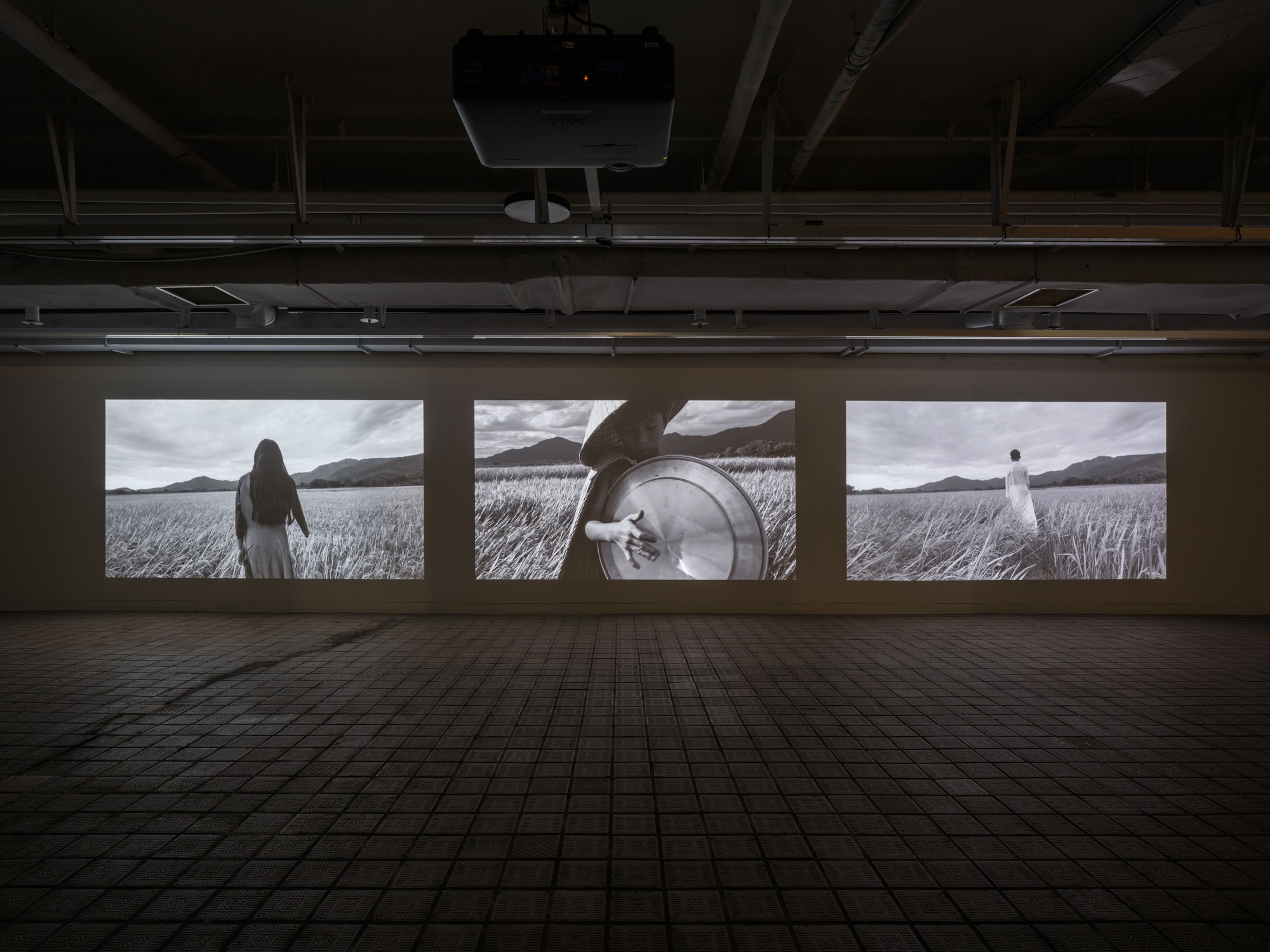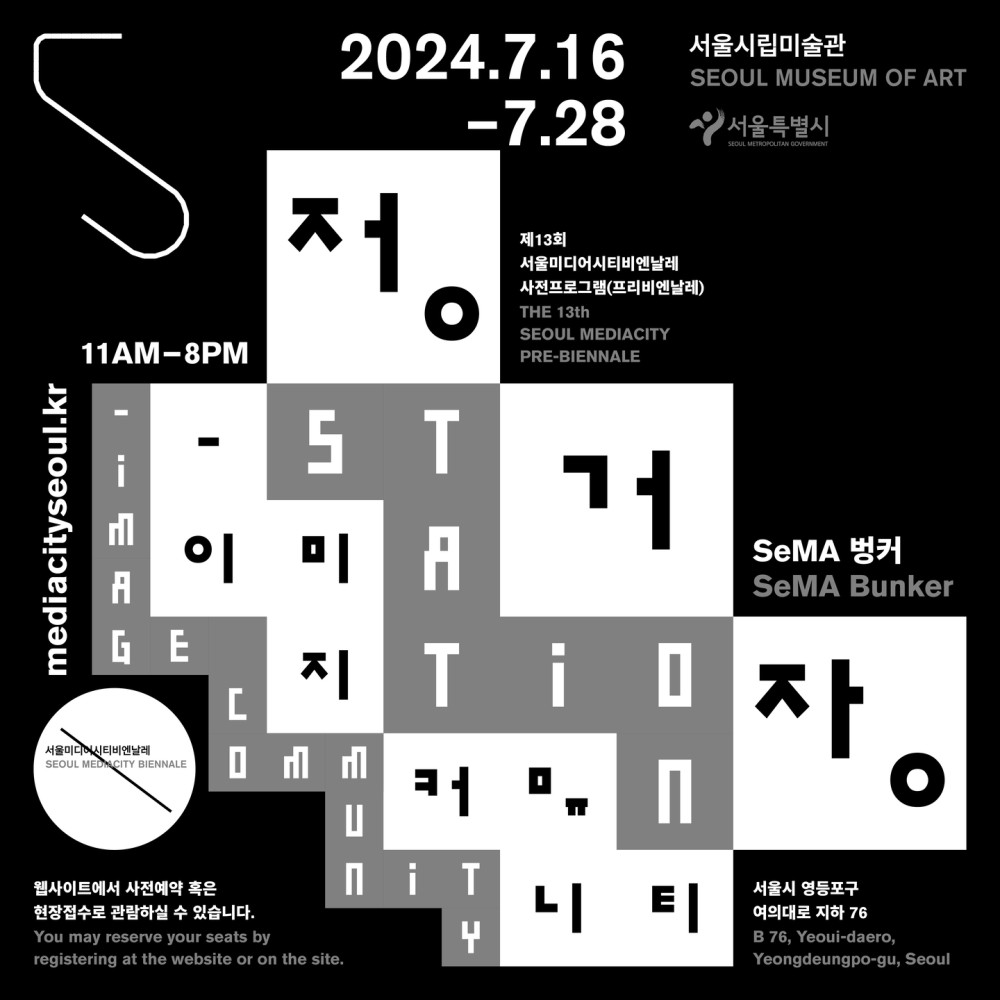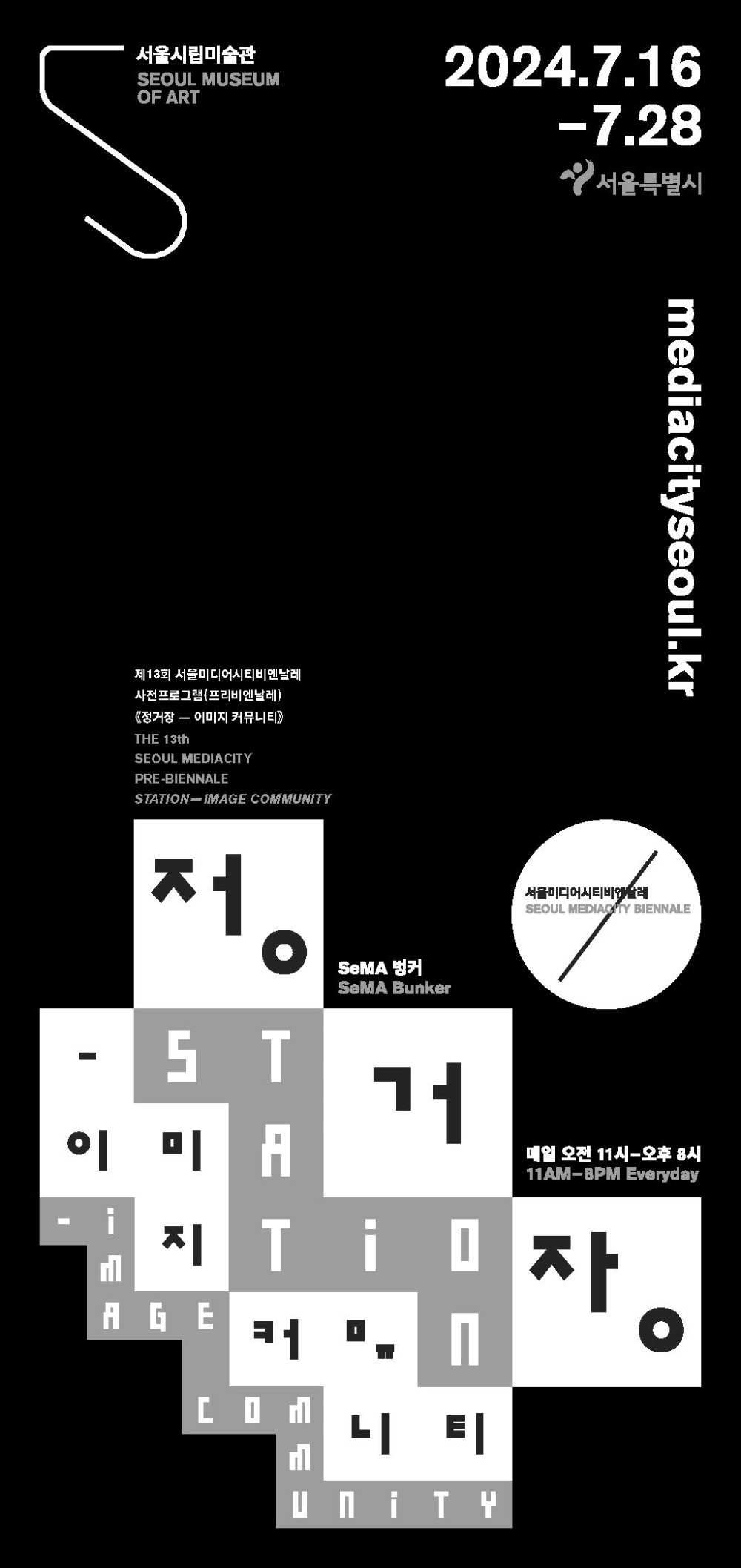
Mute Grain is a personal interpretation of the little-discussed 1945 famine in Vietnam, which took place during the Japanese occupation of French Indochina (1940–45). This famine is believed to have caused the death of more than two million people in the Red River Delta of North Vietnam. The artist weaves oral histories (research undertaken by historian Van Tao, who donated his oral recordings to the Vietnam National Museum of History in Hanoi) with magical elements borrowed from Vietnamese folk tales and chronicles. Told from the perspective of two adolescents, the work is expressed in a lyrical language inspired by Japanese post-war writer Yasunari Kawabata’s Palm-of-the-Hand Stories. The narrative of Mute Grain relays the story of the unjustified death of a young woman named August, who is unable to move on to the next life, and thus becomes a hungry ghost. She keeps her human form, appearing between layers of time and space, across silk screens and cinematic frames, together with her brother, March, who floats anxiously, searching for her. This story of March and August reflects the poorest months of the lunar calendar, a fragile time when farmers once had to borrow money and find side jobs to sustain themselves. (Courtesy of the artist)




